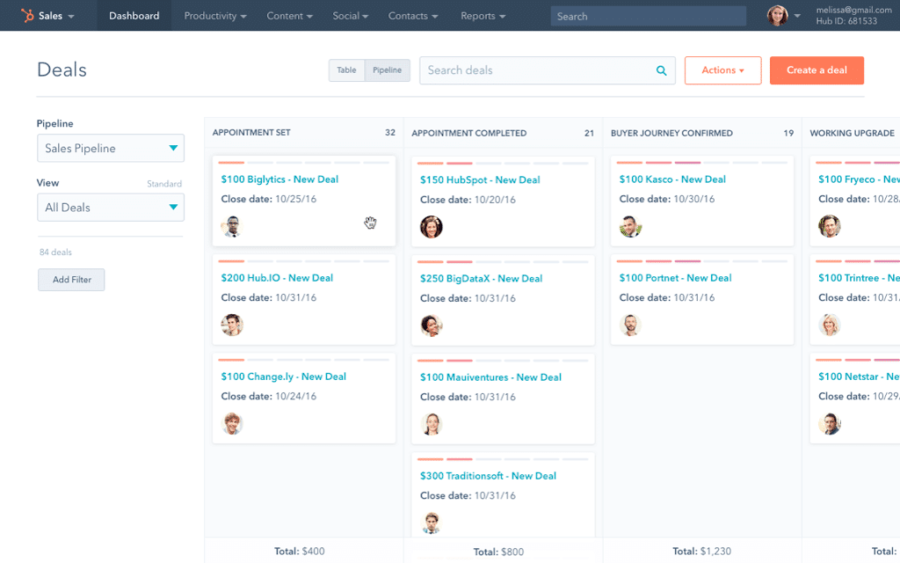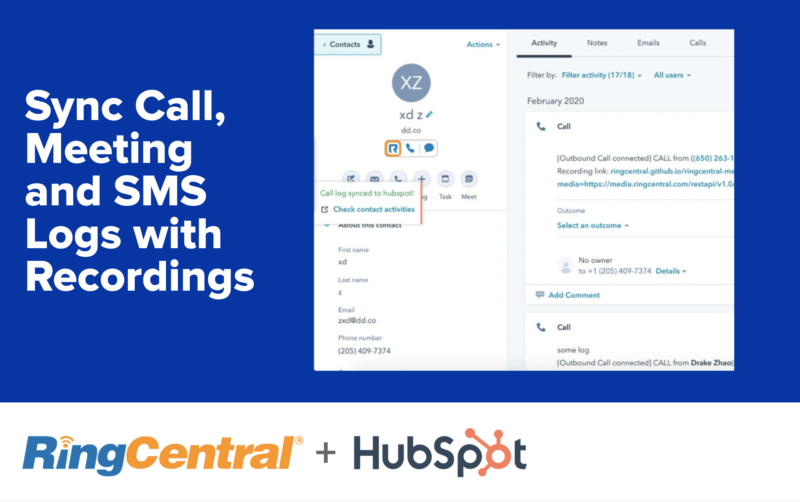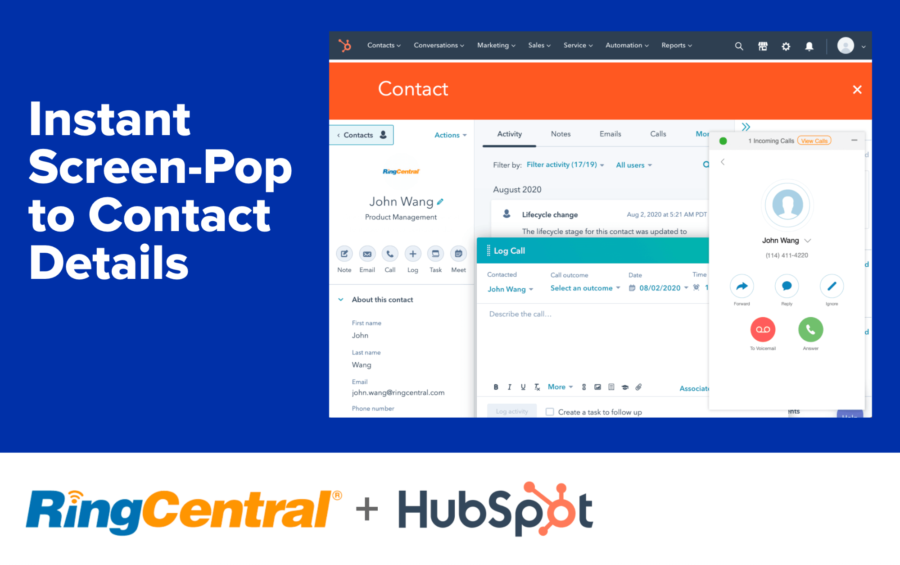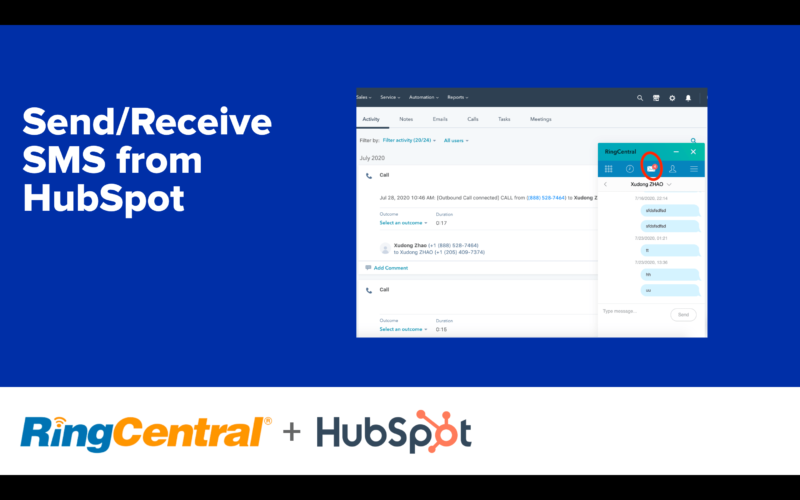With the spread of the internet permeating so deeply into all aspects of our lives, there has never been a better time to start a business.
The good news is, technology is also cheaper (and more advanced) than it’s ever been.
It might be the reason why an average of 6.5 million new startups throw their doors open to customers every year.
Starting a business is really as easy as flipping your smartphone open and launching your company. But growing it? Now that’s a completely different beast to handle.
Scaling a startup is definitely tough. But it’s critical since that’s what determines the long-term survival of your business, leads you to better opportunities, helps you attract good talent, and expands your business’s profit.
And if there’s one tool that can help small startups scale to their true potential, it’s HubSpot. Much like RingCentral, HubSpot offers a suite of services that helps startups across all stages of their growth.
🤝 Is your tech startup’s team collaborating as effectively as it could be? What should you look out for before you start scaling in earnest?
What does HubSpot offer for startups?
To understand what HubSpot can do for your business, it’s important to look at HubSpot’s own growth trajectory from a small marketing agency to become the software giant it’s today.
Brian Halligan and Dharmesh Shah started HubSpot as an internet marketing company in 2004 right after they graduated from MIT.
But instead of being yet another cookie-cutter marketing company that made annoying ads and marketing jingles, HubSpot went against the grain.
They noticed that people weren’t buying any more from brands that bombarded them with interrupting ads. Instead, consumers bought from brands that genuinely helped their customers.
This led HubSpot to pioneer the concept of “inbound marketing”—a way for customers to discover brands and products (that solved their problems) instead of the other way around.
This became the single-most important ingredient for HubSpot’s success in the later years. As a startup, they capitalized on the inbound marketing strategy to pull new customers to their brand and later adopted a “marketing flywheel” to scale bigger.
The marketing flywheel is an approach they applied—in combination with the inbound strategy—to remove friction from their internal processes in order to create a faster growth momentum.
A marketing flywheel basically means you align your business functions to solve your customers’ problems and keep spinning your marketing, sales, and customer service cycles to cater to your customer needs. This, in turn, will inevitably lead you to growth.
There’s a lot you can learn about growing your startup from HubSpot’s flywheel story. And it’s something that all HubSpot products try to deliver in their features and benefits.
Inspired by their own growth, the company has a program called HubSpot for Startups. It’s a platform where startups can use HubSpot’s software, learn from hundreds of online courses, and take advantage of HubSpot Integrations with AI-Driven Workflow Automation. Small startups can access the platform for much cheaper than the regular price of HubSpot software—if they are eligible.
Small startups can access the platform for much cheaper than the regular price of HubSpot software—if they are eligible. For example, if you’re a startup with under $2 million in funding, you can get HubSpot for Startups at:
- 90% off for the first year
- 50% off for the second year
- 25% off from there on
That means if you were to qualify in the HubSpot for Startups program, you would get HubSpot’s Marketing Professional for only $89/month instead of the regular $890/month pricing for the first year.
Same thing with HubSpot’s Sales Professional and Service Professional (which normally cost $500/month and $400/month) that you can get for $50/month and $40/month with discount pricing.
Other than the capital funding, there are other eligibility criteria too.
Your startup has to be a member of one of the 2,000-odd incubators, startup accelerators, or venture capital partners approved by HubSpot.
And if you have already figured out that you don’t qualify for the HubSpot for Startups program, that’s okay. HubSpot has other ways to help small businesses grow.
HubSpot for Entrepreneurs, for example, is yet another program that helps small business owners make use of HubSpot software, online resources, and integrations at a discounted rate of 30% off than the regular pricing.
HubSpot for Entrepreneur’s eligibility criteria is pretty relaxed compared to the HubSpot for Startups program.
You can qualify if you are an existing member of a HubSpot-approved partner or if you are a brand new HubSpot customer. However, you won’t qualify if you are already a customer of Basic, Professional, or Enterprise Hubs.
But what if you are a brand new startup with a paltry budget that can’t buy you HubSpot’s software and resources? Or what if you’re a solopreneur with a ramen noodle budget?
There’s still hope. You can get the above-mentioned benefits at no cost with HubSpot’s free CRM, marketing, sales, and service tools.
The good news is—there’s absolutely no eligibility criteria to start using HubSpot’s free software. Also, the software is actually free. There’s no trial period for you to upgrade to a paid plan—unless you voluntarily decide to do so.
3 smart ways that startups can use use HubSpot
But beyond just using HubSpot’s CRM and marketing software, how can you expand all that functionality—in an actually useful way?
Well, if you’re doing things like using the CRM to log customer interactions, then communication is a natural next step. How will you communicate with those customers (and potential customers)? Do they prefer to contact you by phone? Or do they prefer to live chat, or email? (Or a mix of all three?)
There are actually some neat ways that you can expand HubSpot to give you this phone calling and texting functionality, right in the dashboard. (More on that below.)
To make it easy for businesses to understand its software use cases, HubSpot offers software across three verticals—Marketing Hub, Sales Hub, and Service Hub.
Here are a few ways to use HubSpot products categorized across the above-mentioned verticals.
What are the 4 key components of a successful startup?
1. Create your own inbound marketing strategy
You can take a leaf out of HubSpot’s inbound approach to improve your marketing approach. HubSpot offers multiple features through its Marketing Hub to help you grow website traffic, convert more leads into customers, and scale your inbound marketing strategy.
With the Marketing Hub software, you can automate a large part of your marketing like attracting the right audience to your website pages, creating conversion-ready landing pages, building personalized email templates, and passing high-quality leads to the sales team.
The best thing is—you don’t have to spend long hours moving and entering lead data manually into multiple spreadsheets. The smart automation powers the movement of customer data across all your tools—saving you a ton of time and effort.
The analytics features help you measure your campaigns’ efficiency, attribute the right activities to your revenue, and give you insights on improving your marketing for the future.
For instance, Marketing Hub tracks all your ad dollars spent across Facebook, Instagram, LinkedIn, or Google and populates the data inside HubSpot. You can look at the data to track your expenditure, justify your ad spend, or double down on the channels that give you more bang for your bucks.
Marketing Hub is a one-stop solution for you to manage your marketing assets ranging from blogs, SEO (search engine optimization), social media, and videos.
2. Track sales prospects in one place
If you have been using a spreadsheet to manually track lead data, the Sales Hub can help you raise your game.
HubSpot SalesHub is a great way to organize your leads into different segments and track the success of your sales or marketing campaign using the report and analytics features.
With the Sales Hub, you can create email sequences to nurture leads and manage interactions with potential customers.
HubSpot offers useful features like managing contact information, activity tracking, pipeline visibility, merging with Gmail or Outlook inbox, or chatting with customers and prospects in real-time.
For example, Sales Hub saves you the hassle of writing a new email everyone you have a lead coming through the marketing.
Instead, you can create several email templates to send to your prospects depending on the channel they come from, their demography, or other differentiation you have created in your CRM.
You can also schedule meetings, create email cadences, or track your sales pipeline with the Sales Hub.

One of the cool things you can do in the HubSpot ecosystem—designed for the sales teams—is integrate it with RingCentral. This lets you text prospects right from HubSpot:
And even record your meetings and sync them all in one place:

If you’re looking for ways to speed up your sales process or make life easier for your sales team, this is a great integration to look into.
3. Offer great customer service
Just like its Marketing Hub and Sales Hub, HubSpot also offers great features for customer service teams under the Service Hub.
With the Service Hub set of tools, you can automate your help desk process to a great extent and manage customer relationships more efficiently. Again, if you hook it up to your business phone system, you can make and take calls from customers directly from your HubSpot dashboard. The big benefit here is that when a customer calls, you’d be able to see their entire history with your company, including other conversations and complaints they might have had in the past:

It’s a great way to empower your entire customer service team to pick up a conversation with any customer, even if they’ve never spoken to them before—while offering proactive customer service.
You can also use the Service Hub to manage trigger surveys to collect customer feedback, organize support tickets, initiate or respond to live chat conversations, create and manage knowledge base articles, deploy chat bots, and use the reporting feature to improve your service delivery.
With self-service features like knowledge base management, you can empower your customers to find answers to their queries on their own—reducing the traffic to your customer service helpdesk.
You can also aggregate the common questions that your live chat bots or agents get and convert them into FAQs (frequently asked questions) to help your customers find answers quickly and easily.
How can your startup use HubSpot and RingCentral together?
For a company that rose from nothing to become a $17 billion company on their own, it’s respectable that HubSpot offers so many options for newbie startups to access resources they might not have otherwise.
HubSpot for Startups and the other options are great choices for ambitious startups to improve customer acquisition strategy and manage customer retention.
If you are a startup looking to communicate better with both customers and prospects, look into how you can use RingCentral and HubSpot together!
Originally published Dec 14, 2020, updated May 01, 2024






